-
 Bitcoin
Bitcoin $119100
0.00% -
 Ethereum
Ethereum $3649
-2.30% -
 XRP
XRP $3.213
-8.45% -
 Tether USDt
Tether USDt $1.000
-0.01% -
 BNB
BNB $783.2
-1.26% -
 Solana
Solana $191.1
-5.48% -
 USDC
USDC $0.9999
0.00% -
 Dogecoin
Dogecoin $0.2440
-8.65% -
 TRON
TRON $0.3103
-2.02% -
 Cardano
Cardano $0.8201
-7.68% -
 Hyperliquid
Hyperliquid $44.25
-3.09% -
 Stellar
Stellar $0.4326
-7.78% -
 Sui
Sui $3.777
-5.00% -
 Chainlink
Chainlink $18.34
-6.34% -
 Hedera
Hedera $0.2477
-8.72% -
 Bitcoin Cash
Bitcoin Cash $521.0
-0.79% -
 Avalanche
Avalanche $24.08
-6.29% -
 Litecoin
Litecoin $113.5
-6.79% -
 UNUS SED LEO
UNUS SED LEO $8.970
-0.16% -
 Shiba Inu
Shiba Inu $0.00001397
-8.55% -
 Toncoin
Toncoin $3.231
-2.27% -
 Ethena USDe
Ethena USDe $1.001
0.03% -
 Polkadot
Polkadot $4.174
-6.93% -
 Uniswap
Uniswap $10.37
-4.08% -
 Monero
Monero $317.6
-1.77% -
 Bitget Token
Bitget Token $4.720
-2.36% -
 Pepe
Pepe $0.00001290
-8.38% -
 Dai
Dai $1.000
0.02% -
 Aave
Aave $293.2
-4.95% -
 Bittensor
Bittensor $431.1
-3.60%
How to confirm the short-term selling point of 30-minute dark cloud cover + 5-minute trading volume drop?
A 30-minute dark cloud cover with 5-minute volume drop signals a strong short-term bearish reversal, especially when confirmed by RSI, resistance, and proper risk management.
Jul 24, 2025 at 03:00 am
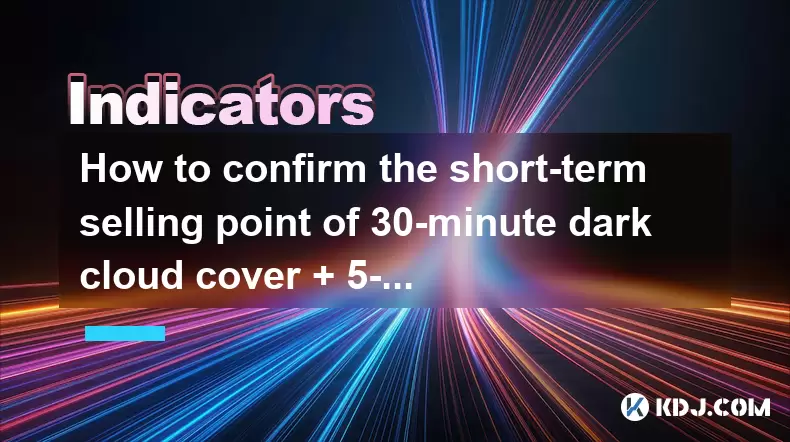
Understanding the Dark Cloud Cover Pattern in a 30-Minute Timeframe
The dark cloud cover is a bearish reversal candlestick pattern that typically forms at the end of an uptrend. When observed on a 30-minute chart, it signals potential short-term exhaustion in buying momentum. This pattern consists of two candles: the first is a strong bullish (green) candle, followed by a bearish (red) candle that opens above the prior high but closes below the midpoint of the first candle’s body. The deeper the close penetrates into the first candle, the stronger the bearish implication.
Traders should confirm that the second candle closes below the 50% retracement level of the first candle’s body. This threshold is critical because it reflects a significant shift in control from buyers to sellers within that 30-minute window. The formation must occur after a clear upward price movement to qualify as a valid reversal signal. If the pattern appears during consolidation or a downtrend, its reliability diminishes.
To enhance accuracy, align the dark cloud cover with key resistance zones or overbought conditions identified via Relative Strength Index (RSI) or Bollinger Bands. For instance, if the RSI on the 30-minute chart is above 70 when the pattern forms, it strengthens the likelihood of a pullback. This confluence increases the probability that the pattern is not a false signal.
Monitoring 5-Minute Trading Volume for Confirmation
While the 30-minute dark cloud cover suggests a potential reversal, the 5-minute volume behavior provides critical short-term confirmation. After the bearish candle closes on the 30-minute chart, shift focus to the 5-minute chart to assess volume trends in the subsequent candles. A genuine reversal often coincides with a noticeable drop in trading volume during attempted recovery moves.
To analyze this, follow these steps:
- After the dark cloud cover completes on the 30-minute chart, observe the next 3 to 5 candles on the 5-minute chart.
- Use a volume oscillator or simple volume bars to compare current volume with the average volume of the previous 20 periods.
- Look for diminishing volume on upward price movements—this indicates lack of buyer conviction.
- Conversely, if downward price movements occur on higher volume, it confirms seller dominance.
A volume drop of 30% or more compared to the average is a strong indicator of weakening bullish momentum. This divergence between price (which may attempt to rise) and volume (which fails to support the move) is essential for confirming the short setup.
Setting Entry Points Based on Confluence
Once both the 30-minute dark cloud cover and 5-minute volume drop are confirmed, the next step is to determine the optimal short entry point. This requires precise timing and risk management.
Consider the following conditions before entering:
- The 30-minute candle must fully close, showing the dark cloud cover pattern.
- On the 5-minute chart, at least two consecutive candles must show declining volume on upward price action.
- Price should fail to surpass the high of the dark cloud cover candle.
- A bearish engulfing or inside bar pattern on the 5-minute chart can serve as a trigger.
Entry should be executed when:
- A 5-minute candle closes below the low of the consolidation that follows the dark cloud cover.
- Volume on that candle is equal to or higher than the preceding down-volume candle.
- The price is trading below the 20-period Exponential Moving Average (EMA) on the 5-minute chart.
Place the entry order as a market sell or limit sell slightly below the consolidation low to avoid slippage in fast-moving markets.
Position Sizing and Stop-Loss Placement
Risk management is crucial when trading short-term reversals. The volatile nature of cryptocurrency markets demands strict adherence to position sizing and stop-loss rules.
To calculate position size:
- Determine the maximum risk per trade (e.g., 1–2% of trading capital).
- Measure the distance between the entry point and the stop-loss level in price units.
- Divide the risk amount by the price distance to get the number of units to sell.
The stop-loss should be placed above the high of the 30-minute dark cloud cover candle. This level represents the point where the bearish reversal thesis is invalidated. Placing the stop just above this high ensures protection against false breakdowns.
For example, if the dark cloud cover high is $30,100 and the entry is $29,800, the stop-loss could be set at $30,110. This gives a risk of $310 per unit. If the trader is willing to risk $100 total, the position size would be approximately 0.32 units.
Avoid placing the stop-loss too tightly, as normal market noise in crypto can trigger premature exits.
Take-Profit Strategies Using Price Structure
Taking profit requires identifying logical support levels where bearish momentum may stall. These levels can be derived from recent swing lows, moving averages, or Fibonacci retracement zones.
Identify potential targets:
- The most recent 30-minute or 1-hour swing low before the uptrend.
- The 50% or 61.8% Fibonacci retracement level of the prior upward move.
- Areas where volume was previously concentrated (visible on volume profile).
Set multiple take-profit levels to secure gains progressively:
- Close 50% of the position at the first support level.
- Close another 30% at the 61.8% retracement.
- Let the remaining 20% run with a trailing stop based on the 5-minute EMA.
Using a trailing stop of 10–15 pips on the 5-minute chart allows the trade to capture extended downside while protecting profits.
Common Pitfalls and How to Avoid Them
Traders often misinterpret the dark cloud cover due to lack of confirmation. One major mistake is acting on the pattern without waiting for the 30-minute candle to close. Premature entries increase exposure to fakeouts.
Another error is ignoring market context. If the broader trend on the 4-hour or daily chart is strongly bullish, a 30-minute reversal may only lead to a minor pullback, not a sustained downtrend. Always assess higher timeframes before trading counter-trend.
Volume analysis must be precise. A slight dip in volume is not enough—look for a clear and sustained decline during price recovery attempts. Using volume moving averages helps filter out noise.
Lastly, avoid trading this setup during major news events or low-liquidity periods (e.g., weekends for some altcoins), as volume behavior becomes erratic and unreliable.
FAQs
What if the 5-minute volume doesn’t drop after the dark cloud cover?
If volume remains high or increases during price recovery, it suggests strong buyer interest. In this case, the dark cloud cover may be a pause, not a reversal. Avoid entering the short trade until volume confirms weakness.
Can this strategy be applied to all cryptocurrencies?
Yes, but it works best on highly liquid assets like Bitcoin or Ethereum. Low-cap altcoins often have manipulative volume patterns, making volume-based signals less reliable.
How long should I wait for the volume drop to confirm?
Monitor the next 3 to 5 candles on the 5-minute chart after the 30-minute candle closes. If no volume drop occurs within this window, the signal weakens.
Should I use leverage when trading this setup?
Leverage increases risk, especially in short-term trades. If used, keep it below 3x and ensure the stop-loss distance accounts for volatility spikes common in crypto.
Disclaimer:info@kdj.com
The information provided is not trading advice. kdj.com does not assume any responsibility for any investments made based on the information provided in this article. Cryptocurrencies are highly volatile and it is highly recommended that you invest with caution after thorough research!
If you believe that the content used on this website infringes your copyright, please contact us immediately (info@kdj.com) and we will delete it promptly.
- South Korea's Credit Card Industry Embraces Stablecoin Regulations: A New Era?
- 2025-07-24 10:30:12
- Trump, AI, and Deregulation: A Wild West Tech Landscape?
- 2025-07-24 10:30:12
- Bitcoin Cash (BCH) Price Forecast & Trends: What's the Buzz?
- 2025-07-24 08:50:12
- Public Companies and Ethereum: A $3.2 Billion Bet on the Future?
- 2025-07-24 09:10:12
- XRP, Safe Havens, and BTC Miners: Navigating Crypto's Latest Moves
- 2025-07-24 08:30:12
- XRP, SEC, and ETFs: A Crypto Rollercoaster
- 2025-07-24 09:10:12
Related knowledge
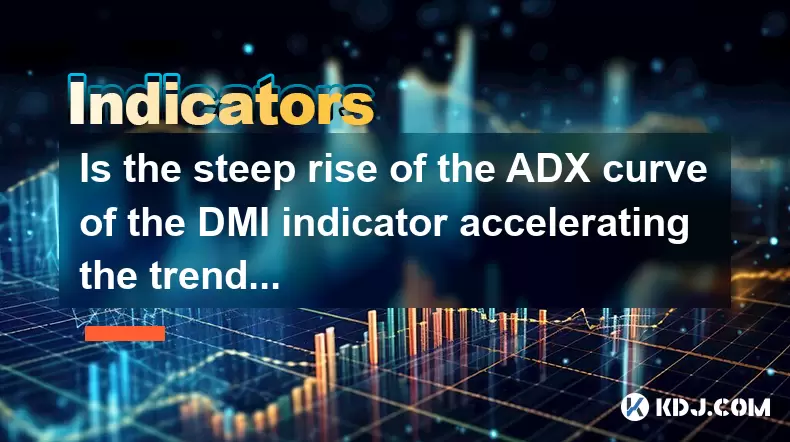
Is the steep rise of the ADX curve of the DMI indicator accelerating the trend or about to reverse?
Jul 24,2025 at 11:15am
Understanding the DMI Indicator and Its ComponentsThe Directional Movement Index (DMI) is a technical analysis tool used to identify the presence and ...
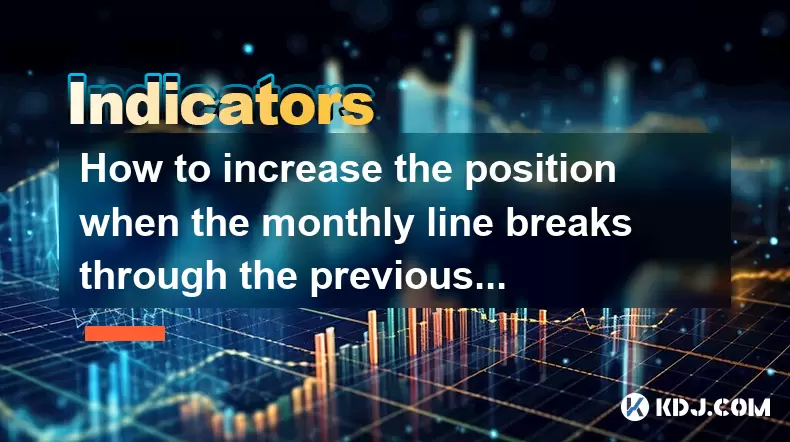
How to increase the position when the monthly line breaks through the previous high + the weekly KD golden cross + the daily line gaps?
Jul 24,2025 at 09:42am
Understanding the Monthly Line Breakout Beyond Previous HighWhen the monthly line breaks through the previous high, it signals a powerful shift in lon...
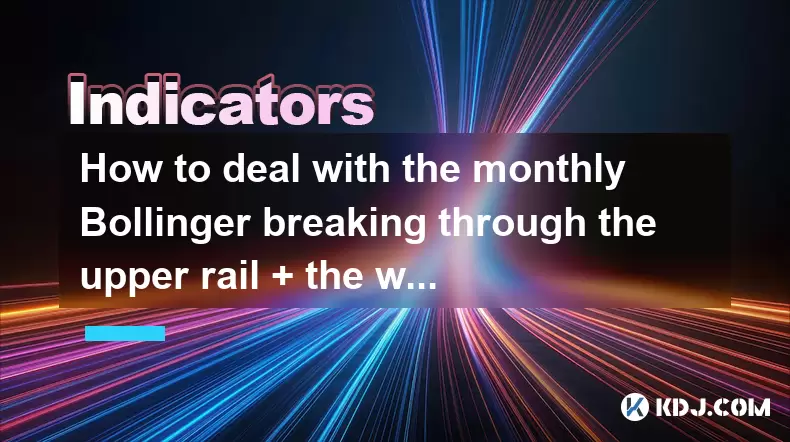
How to deal with the monthly Bollinger breaking through the upper rail + the weekly RSI overbought + the daily line's long negative correction?
Jul 24,2025 at 08:42am
Understanding the Bollinger Bands Breakout on the Monthly ChartWhen the monthly Bollinger Bands experience a breakout above the upper rail, it signals...
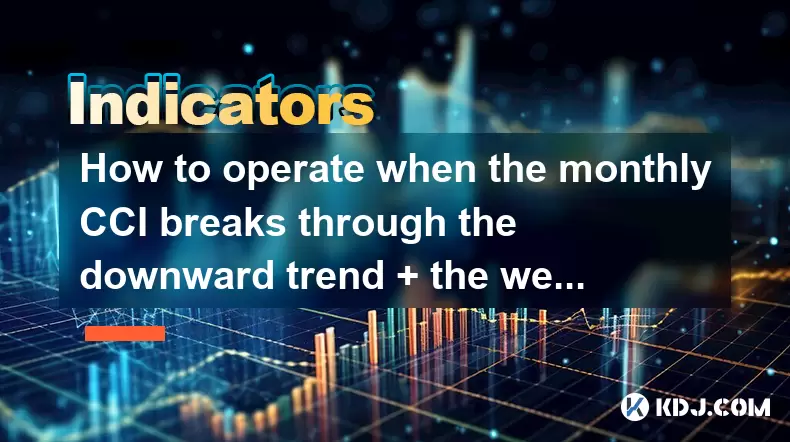
How to operate when the monthly CCI breaks through the downward trend + the weekly line's three consecutive positives + the daily line's shrinking volume and stepping back?
Jul 24,2025 at 09:00am
Understanding the CCI Indicator and Its Role in Trend AnalysisThe Commodity Channel Index (CCI) is a momentum-based oscillator used to identify overbo...
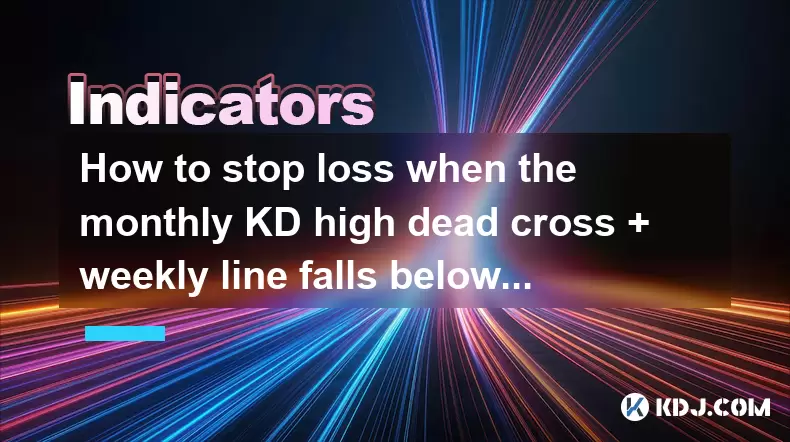
How to stop loss when the monthly KD high dead cross + weekly line falls below the 20-week line + daily line pulls back on the 5-day line?
Jul 24,2025 at 07:00am
Understanding the Indicators: KD, Weekly, and Daily Moving AveragesWhen traders analyze cryptocurrency price movements, they often rely on technical i...
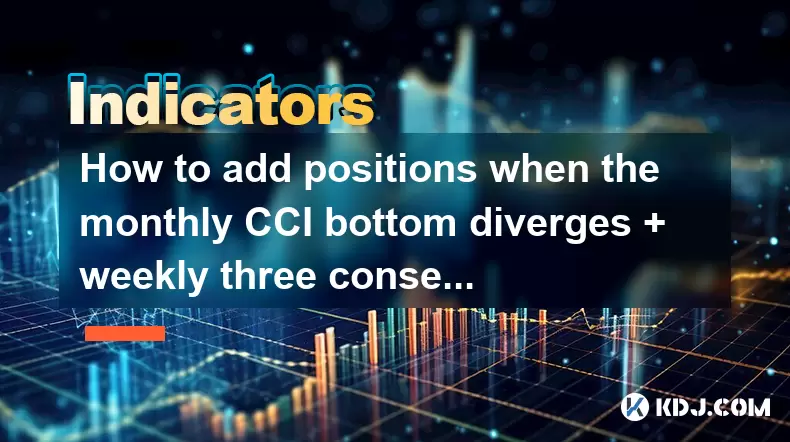
How to add positions when the monthly CCI bottom diverges + weekly three consecutive Yang + daily line gap is not filled?
Jul 24,2025 at 05:22am
Understanding the Monthly CCI Bottom DivergenceWhen analyzing the monthly CCI bottom divergence, traders are identifying a potential reversal signal i...

Is the steep rise of the ADX curve of the DMI indicator accelerating the trend or about to reverse?
Jul 24,2025 at 11:15am
Understanding the DMI Indicator and Its ComponentsThe Directional Movement Index (DMI) is a technical analysis tool used to identify the presence and ...

How to increase the position when the monthly line breaks through the previous high + the weekly KD golden cross + the daily line gaps?
Jul 24,2025 at 09:42am
Understanding the Monthly Line Breakout Beyond Previous HighWhen the monthly line breaks through the previous high, it signals a powerful shift in lon...

How to deal with the monthly Bollinger breaking through the upper rail + the weekly RSI overbought + the daily line's long negative correction?
Jul 24,2025 at 08:42am
Understanding the Bollinger Bands Breakout on the Monthly ChartWhen the monthly Bollinger Bands experience a breakout above the upper rail, it signals...

How to operate when the monthly CCI breaks through the downward trend + the weekly line's three consecutive positives + the daily line's shrinking volume and stepping back?
Jul 24,2025 at 09:00am
Understanding the CCI Indicator and Its Role in Trend AnalysisThe Commodity Channel Index (CCI) is a momentum-based oscillator used to identify overbo...

How to stop loss when the monthly KD high dead cross + weekly line falls below the 20-week line + daily line pulls back on the 5-day line?
Jul 24,2025 at 07:00am
Understanding the Indicators: KD, Weekly, and Daily Moving AveragesWhen traders analyze cryptocurrency price movements, they often rely on technical i...

How to add positions when the monthly CCI bottom diverges + weekly three consecutive Yang + daily line gap is not filled?
Jul 24,2025 at 05:22am
Understanding the Monthly CCI Bottom DivergenceWhen analyzing the monthly CCI bottom divergence, traders are identifying a potential reversal signal i...
See all articles

























































































